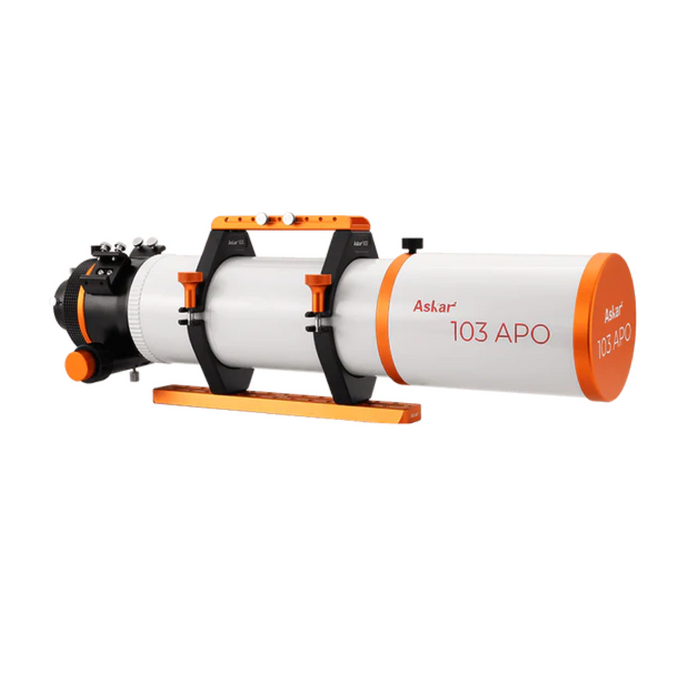The Askar 103APO is a 103mm aperture, 700mm focal length, and 6.8 native focal ratios OTA.
In astrographs, the size of the aperture has a significant impact on observability and image quality. The aperture of 103mm gives it an inherent advantage in terms of light-gathering power, resolution, brightness, and contrast, allowing the photographer to gather more light and present more details and brighter objects in the image.
Askar 103APO adopts a triplet air-spaced APO lens design, including one piece of ED glass.
APO(Apochromatic) telescope is a type of telescope with the ability to correct chromatic aberration. Chromatic aberration is a common optical aberration that causes colored edges or blurring around the edges of objects in an image. Other telescopes have relatively simple optical designs and are prone to chromatic aberration, especially at high magnification or in observations where color accuracy is required. However, APO telescopes employ special optical designs and multiple lens elements to correct chromatic aberration, naturally providing higher-quality object details and color accuracy.
In the refractor's element structure, increasing the number of lens elements and designing lens combinations can effectively improve chromatic aberration correction. However, this also means increased production costs and design complexity.
ED glass, also known as low-dispersion glass, is a type of optical glass specifically designed to reduce chromatic aberration. Chromatic aberration occurs because light of different wavelengths refracts differently when passing through a lens, leading to color separation and a decrease in image quality. ED glass has special optical properties that help reduce stray light and effectively minimize chromatic aberration.
The Askar 103APO not only adopts a triplet lens design (while budget astrographs on the market typically use doublet), but it also has an ED glass to further enhance image quality.







